Steam Machines, Steam Link, & Steam Controller Launching November 10th
by Ryan Smith on June 4, 2015 5:45 PM EST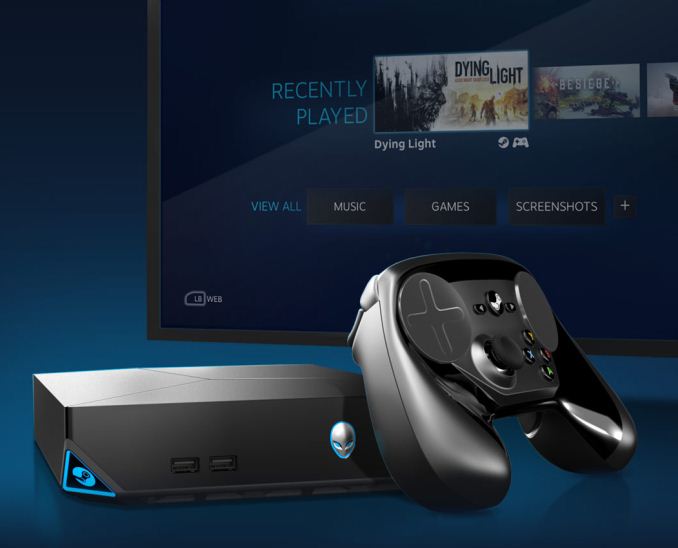
For a couple of years now Valve has been developing and promoting the concept of what has become their Steam Universe. The Linux-based SteamOS running on top of console-sized Steam Machines for the living room, controlled with the Steam Controller. Now after becoming subject to Valve Time and delayed from 2014, today Valve and their partners are announcing that Steam Universe is finally launching later this year.
Steam Controller
First and foremost, let’s start with the Steam Controller. The final version of Valve’s controller is pretty much identical to what we saw at GDC 2015, featuring what has become the controller’s signature touchpads, along with an analog stick, motion controls, haptics (vibration), and what Valve is calling dual-stage triggers, all communicating with host systems over Bluetooth. Though ultimately lacking the touchscreens of Valve’s original design, the final controller retains the touchpads and the same goals Valve had held to since the start: making more traditional mouse-driven PC games playable on the couch with a controller. Valve has put up a short promotional video showing it in action, and it will be interesting to see if it works as well in real life as Valve would like it to. When not part of a Steam Machine bundle, Valve will be selling the Steam Controller stand-alone for $49.
Steam Machines
Next up, this brings us to Valve’s Steam Machines initiative. With last year’s delays we’ve seen a few of the initial Steam Machines reissued as Windows machines in the interim, but now with Valve finally ready to ship on their end, the full collection of Machines will be available. In terms of design all of these Machines are all small form factor designs intended for the living room, with the actual designs being a mix of existing SFF designs – such as the Gigabyte BRIX Pro or the Falcon Northwest Tiki – while other designs being brand new entirely.
Meanwhile as far as performance and costs go, the initial wave of Machines run the gauntlet from low-powered, console-like computers to high-end machines that are meant to take a stab at 4K rendering. The cheapest machines start at $449, such as the Alienware in its low-end, Core-i3 powered configuration, and also the iBuyPower SBX. Meanwhile at the middle of the pack are machines like the Zotac SN970 at $999, and finally at the high-end the sky’s the limit. With many of these designs accepting desktop class CPUs and video cards, the price tag on the top configurations can go into the thousands of dollars, with Falcon Northwest quoting $4999 for what will be their top-end Tiki.
As one might expect, all of the Steam Machines are shipping with one Steam Controller, with additional controllers available from Valve for $49. Meanwhile the very first Steam Machines from Alienware and Syber are already available for pre-order from GameStop and Syber respectively, while the rest are slated to be available in November. The pre-order machines are said to be a “limited quantity” (though we don’t know just how limited), and will be shipping on October 16th, for gamers who are willing to order the machines before the reviews and formal launch. Otherwise we’re expecting to see everything else go out around November 10th.
Steam Link
Finally, we have the Steam Link, Valve’s in-home streaming receiver for Steam. Intended to be used with Steam’s existing, built-in streaming technology, the Link is designed to allow playing Steam games in other locations away from the host PC/Machines, be it things like spare bedrooms or locating the host in said spare bedroom and putting the Link in the living room. The Link features a 2x2 802.11ac for wireless connectivity, or a 100Mbit Ethernet port for wired fallback, along with a trio of USB 2.0 ports and of course the necessary HDMI port.
Valve will be selling the Link on its own for $49, while a package with the controller will be $99, and somewhat surprisingly for a consumer device these days, Valve’s even throwing in HDMI and Ethernet cables. As with the Steam Machines, the Link is available for pre-order through Valve or at GameStop, with a limited number of the devices shipping on October 16th.
Source: Valve


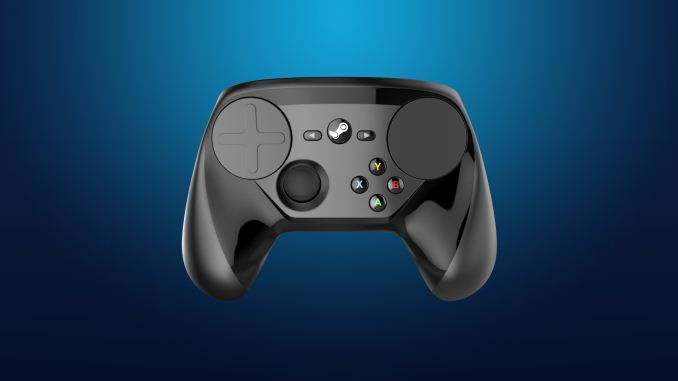
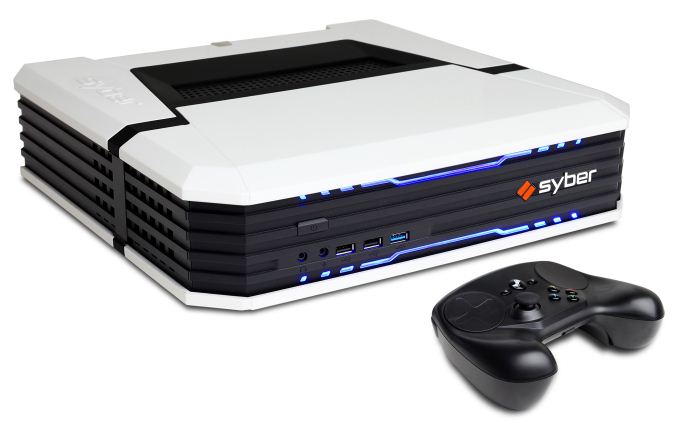






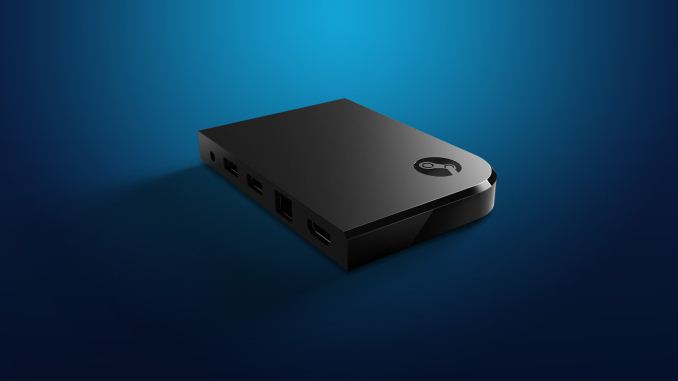
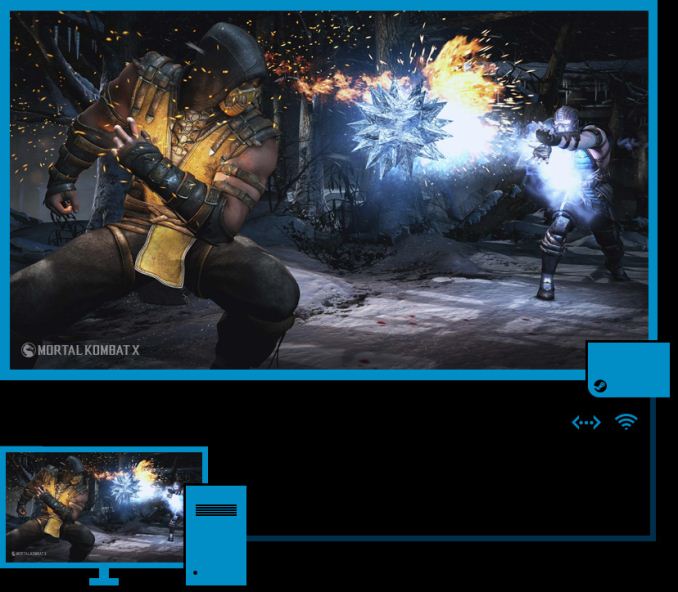








57 Comments
View All Comments
Mushkins - Friday, June 5, 2015 - link
Their streaming box seriously only has a 100Mb NIC on it? I didn't even know they made motherboards that werent 10/100/1000 anymore. Especially in a box focused on local network streaming...I'm sorry, but every time I look at these they just feel more and more like sucker boxes. Overpriced, underpowered, gimmicky junkware.
minijedimaster - Friday, June 5, 2015 - link
100Mb wired is beyond stupid. I know people are claiming that the compressed streaming doesn't require higher than that. But still, what's a 1Gb NIC cost these days, maybe 1-2 dollars more than the 100Mb one? Such a stupid decision.Etsp - Friday, June 5, 2015 - link
So, other than compressed streaming, what other task would you consider using the Link for that requires more network bandwidth?100mbps is more than sufficient for a 60FPS 4k stream. This device only supports 1080p. So, for something with zero benefit, you want them to spend $2 more on a $49.99 device? That's 4% of the MSRP! Such a stupid opinion.
minijedimaster - Friday, June 5, 2015 - link
Or you know, don't include the network cable in the box since most people have one already anyway. There's your 4% and then some. Such a stupid human being.Etsp - Friday, June 5, 2015 - link
Don't assume that most people are like you. It's a pretty common logical fallacy, because it's a really easy trap to fall into. A lot of people don't have an extra network cable laying around.Also, when designing a product to go into mass production, usually even 0.1% difference in the net cost of the device between options is analyzed for cost/benefit. Gigabit offers no benefit to this device, other than as something to put into the specs as a marketing gimmick.
So, let's address your proposed hypothetical change: Don't include a network cable, which may be useful for some buyers. Instead, upgrade the wired network interface, which will not benefit any buyers.
When taking that into consideration, which is the better choice?
jwcalla - Friday, June 5, 2015 - link
I didn't even realize they made 100Mbps NICs anymore. Did they get this from Bob's Outlet NICs or something?The bundled ethernet cable could be valuable... if it's long enough. If it isn't, it's dead weight.
I'm beginning to think overall that the device is too limited (in functionality) to be interesting though.
minijedimaster - Friday, June 5, 2015 - link
Network cable can be purchased by end user if required anywhere and cheaply. NIC is built in, so you're stuck with what they give you forever. I'd rather have the things that are out of my control taken care of up front by the manufacturer. That's the better choice.kyuu - Friday, June 5, 2015 - link
You might have a point, except they include an 802.11ac wireless chipset. 802.11n can provide over 100mbps of bandwidth. So why spend the extra money on a more expensive wireless chipset?Really, the sensible thing would have been to have two versions of the Link: one with 1Gbps Ethernet only, the other with AC wireless. Including both in the same box when the majority of people are only going to ever use one or the other is what's stupid.
minijedimaster - Friday, June 5, 2015 - link
Wireless has high packet loss and latency compared to wired connections. I'd choose wired over 802.11ac any day of the week. Yes, even if the wired is only 100Mb.przemo_li - Friday, June 5, 2015 - link
Why do You need more?4K should mean 20MB top!
Why do You need more?